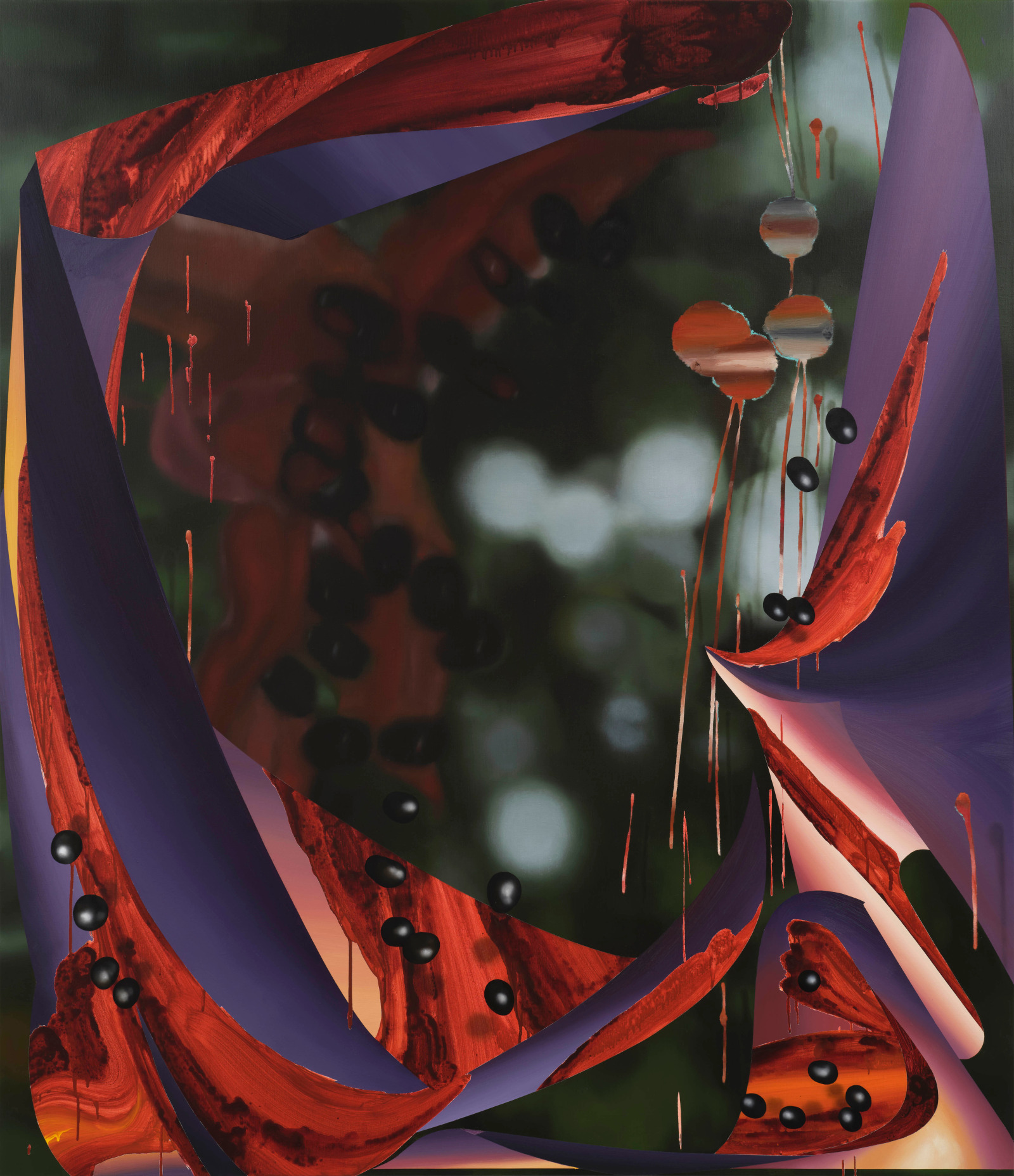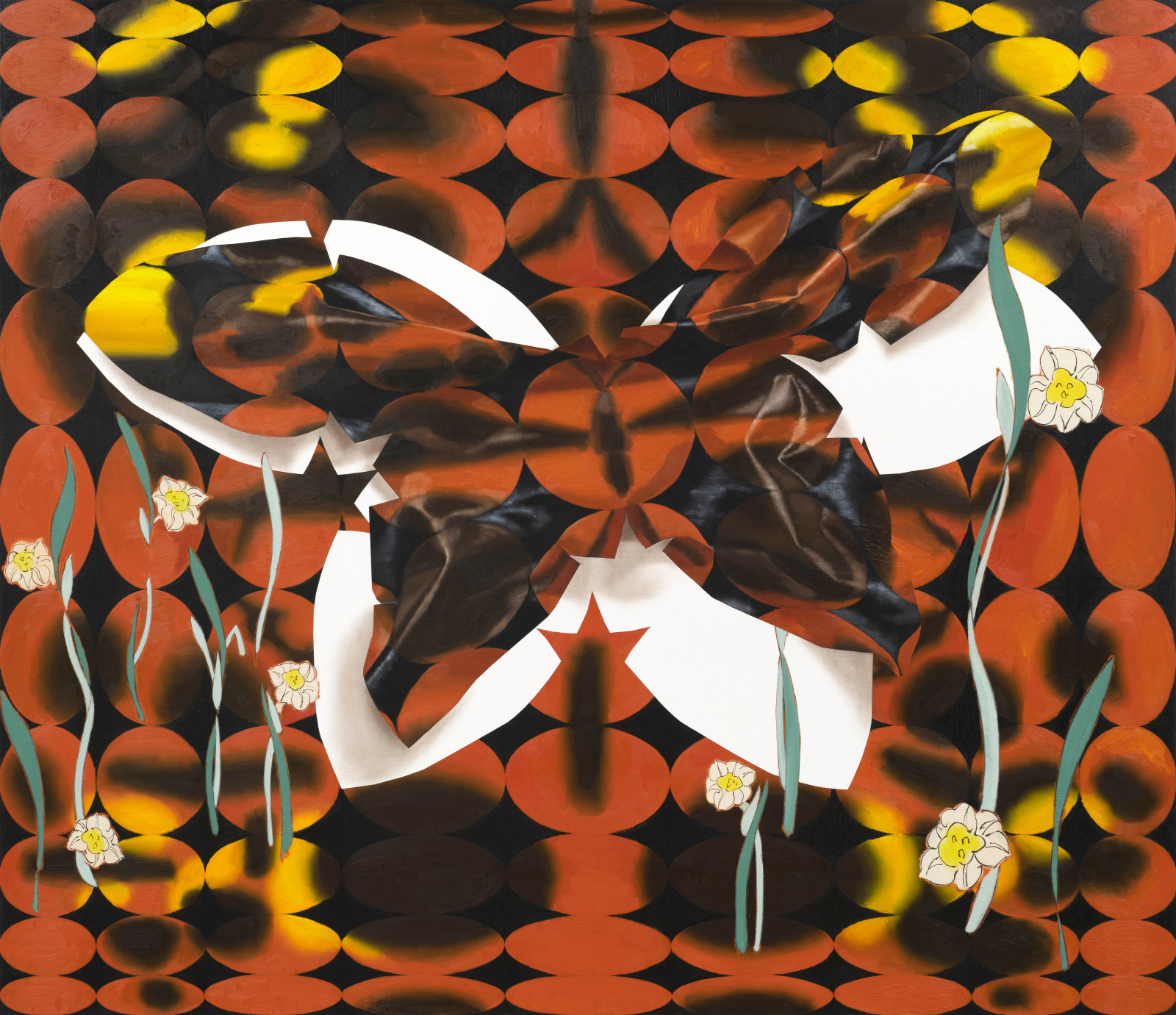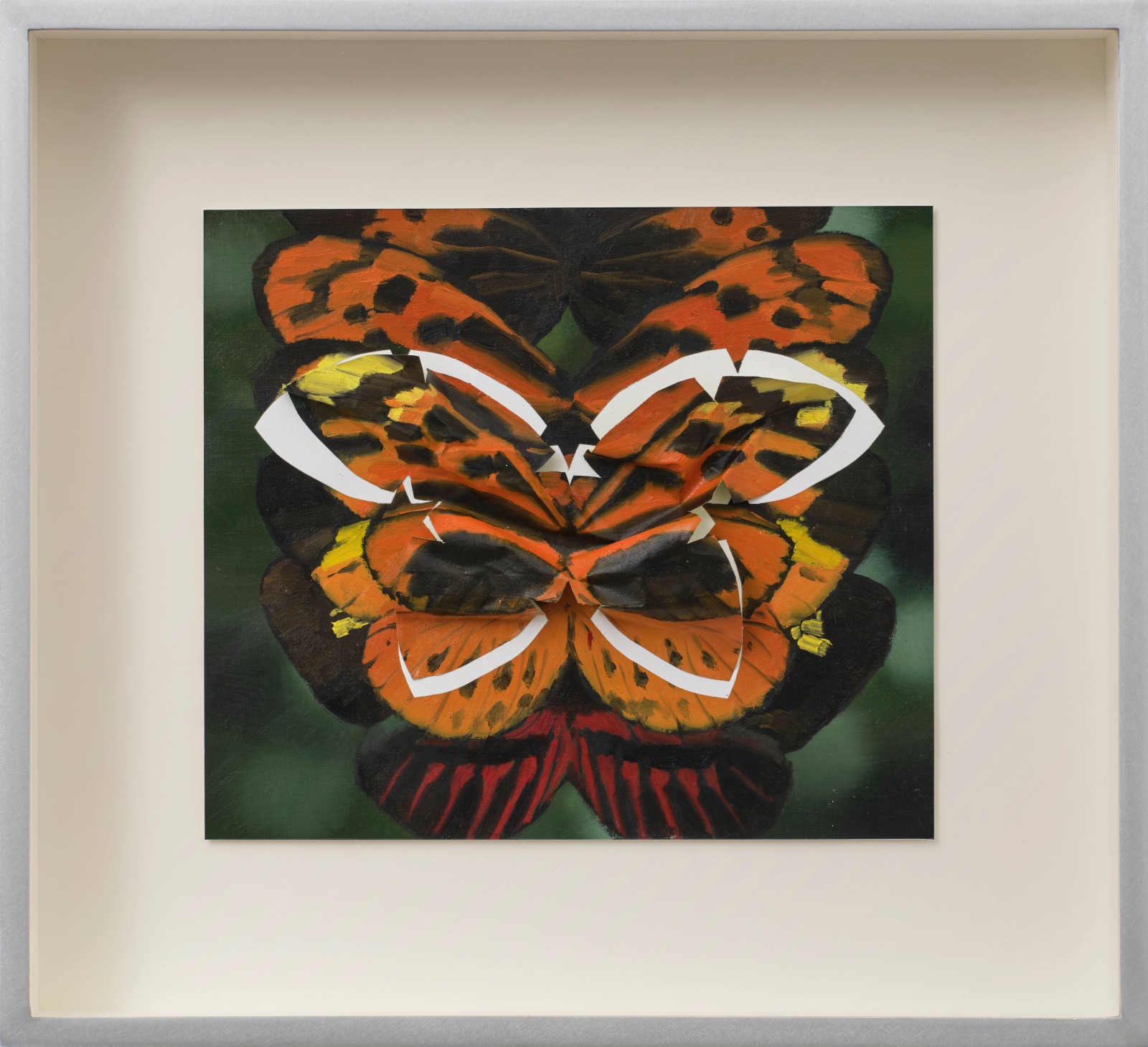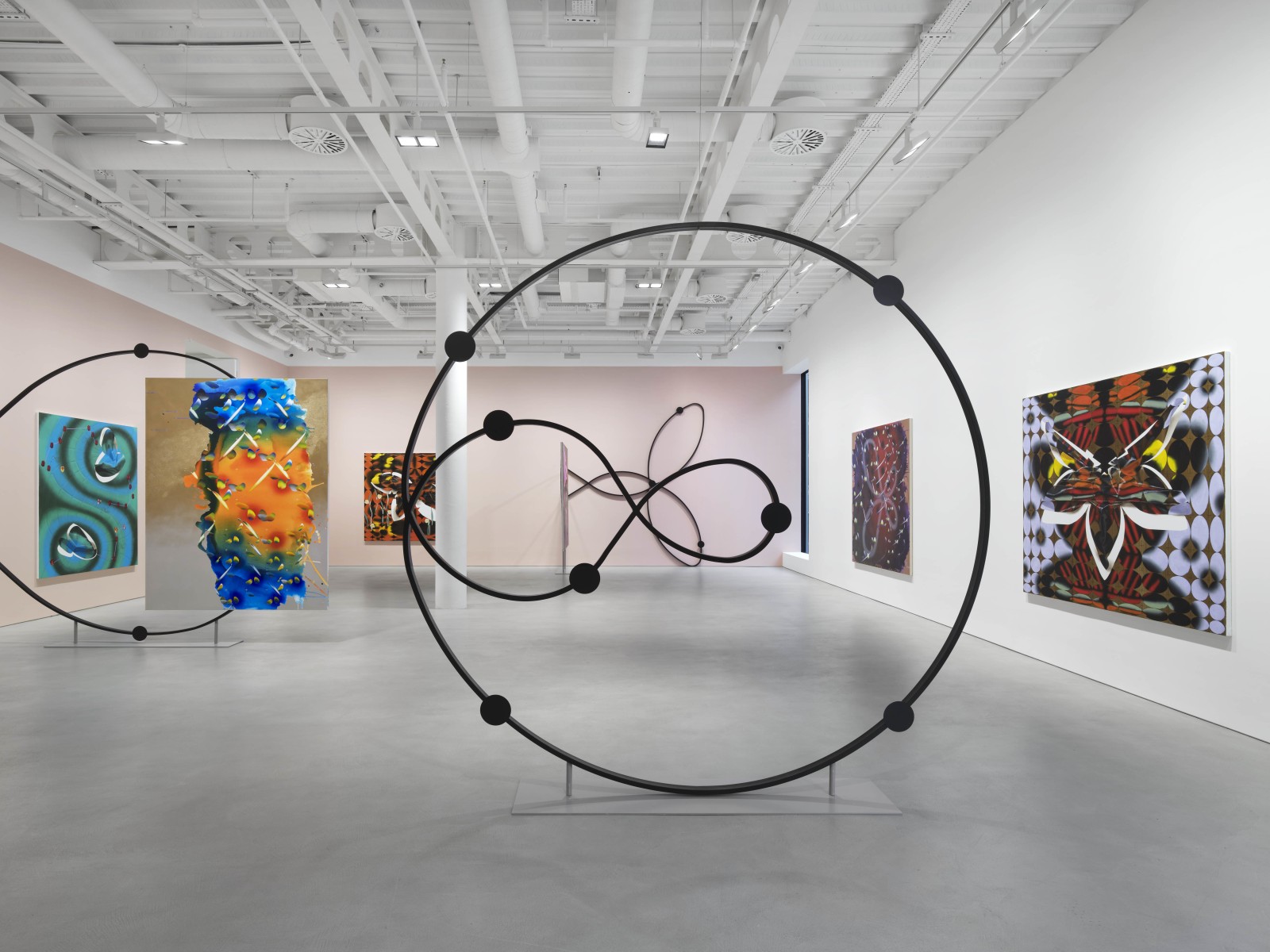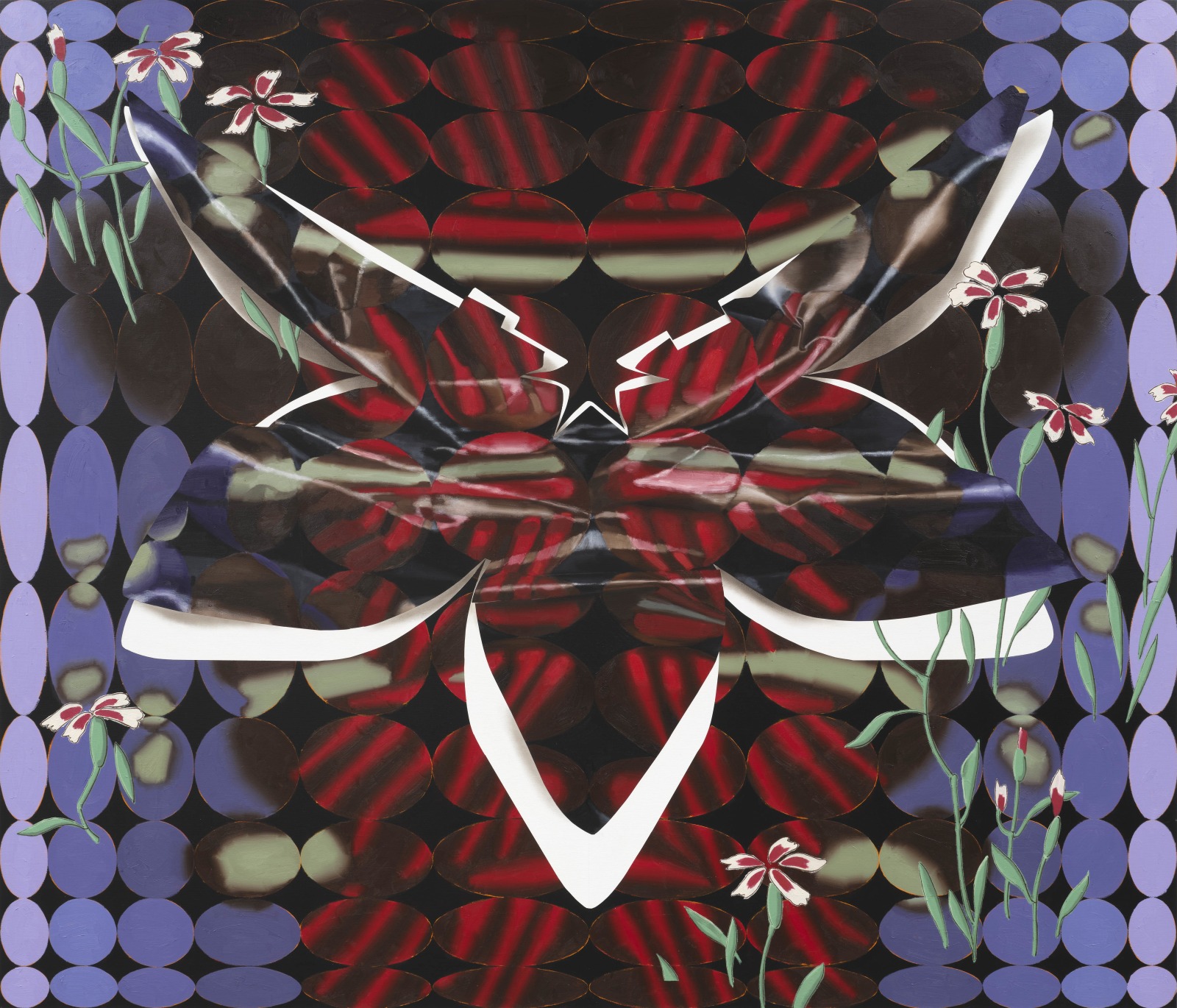Pilar Corrias is pleased to present Flat Earth, Vivien Zhang’s second solo show with the gallery.
The exhibition marks a new development in the artist’s ongoing exploration of the flawed linguistic, visual and taxonomic systems that shape our view of a hyper-saturated world. In her new series of paintings, Zhang abstracts visual devices from a breadth of disciplines – from cartography, physics and botany, to the study of butterflies – to produce playful paintings that bring the sociopolitical implications of visual deception to the fore.
‘Reality, as much as we can understand it, is composed not of discrete objects, but relationships. We constantly mistake these for category divisions: object, subject; figure, ground; art, artist; artwork, audience. Zhang’s work refuses such distinctions, and the easy sense of superiority, the reification of hierarchies, that they promote.’ – James Bridle
Plant life is also put under the microscope, with Zhang producing studies of several species of flower that possess the prefix ‘pseudo-’ in their botanical names. Such plants are considered similar enough to another species to be lent its name, but lack legitimacy on their own terms. For the artist, this group of plants demonstrates the inherent limitations of language.
As our knowledge of the world and its parts continuously expands, the status quo becomes unfit for purpose. Categories must be revised and truths unlearnt. In her paintings, Zhang purposefully ruptures some of our inherited information systems, and through the fissure offers a new way of looking at what we thought we already knew.

